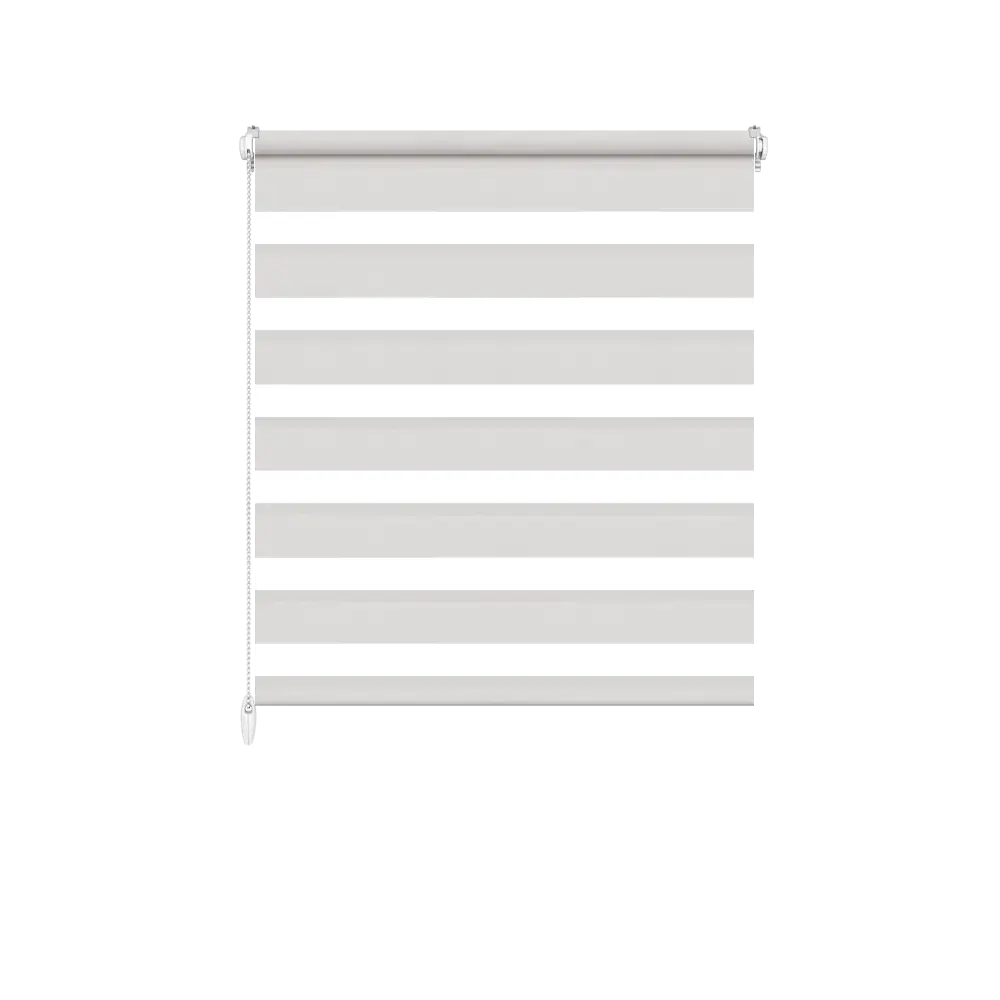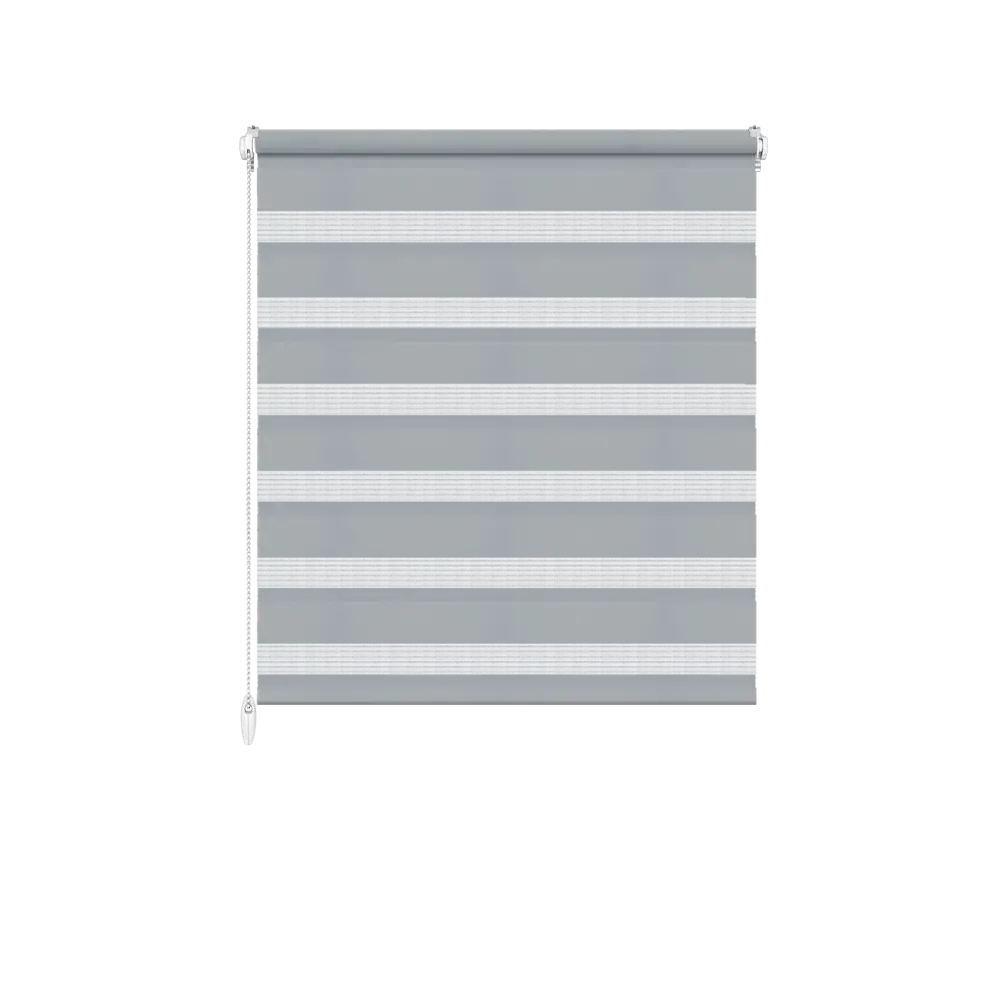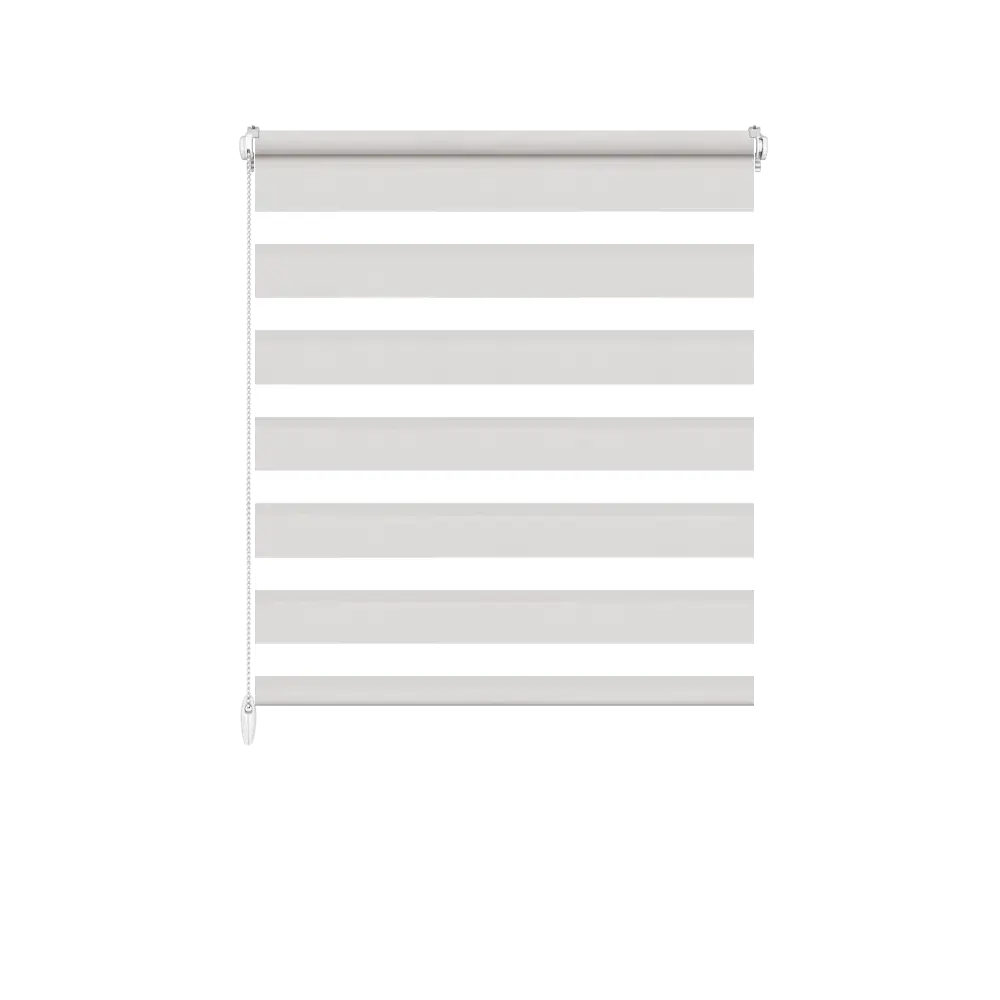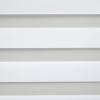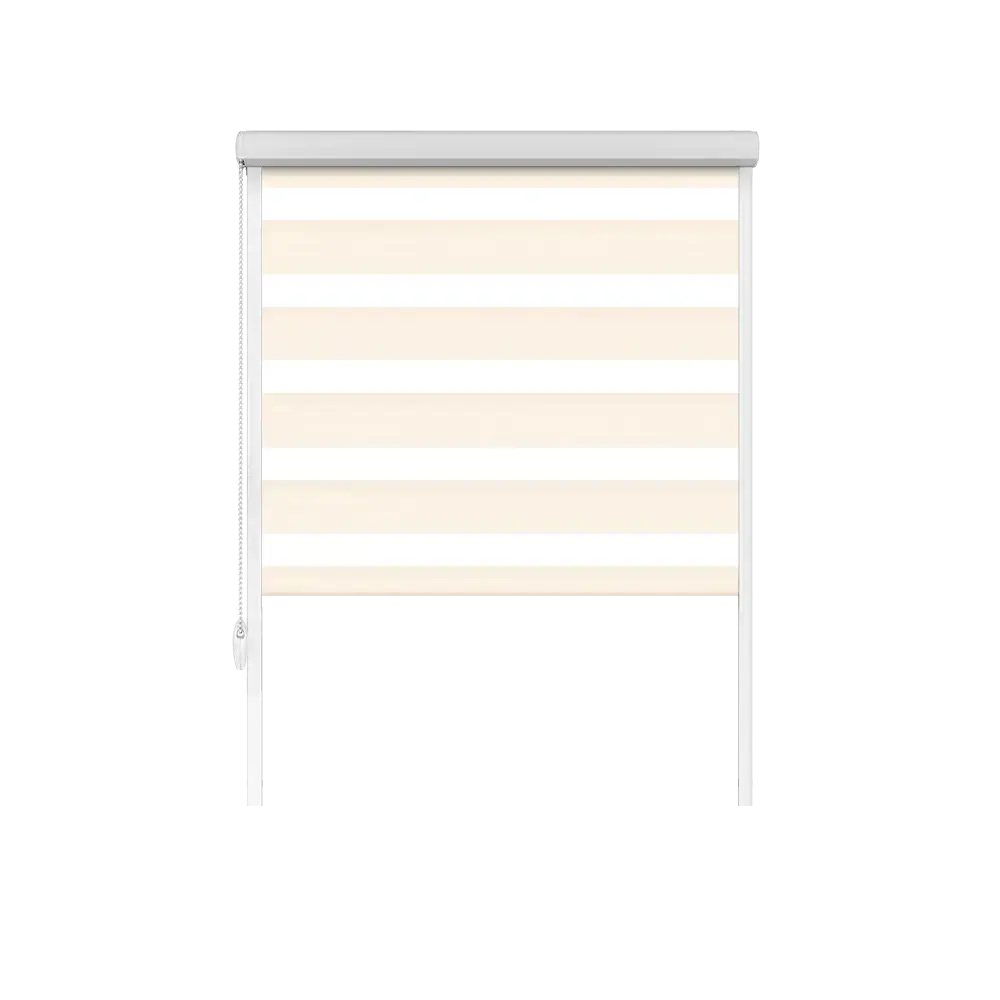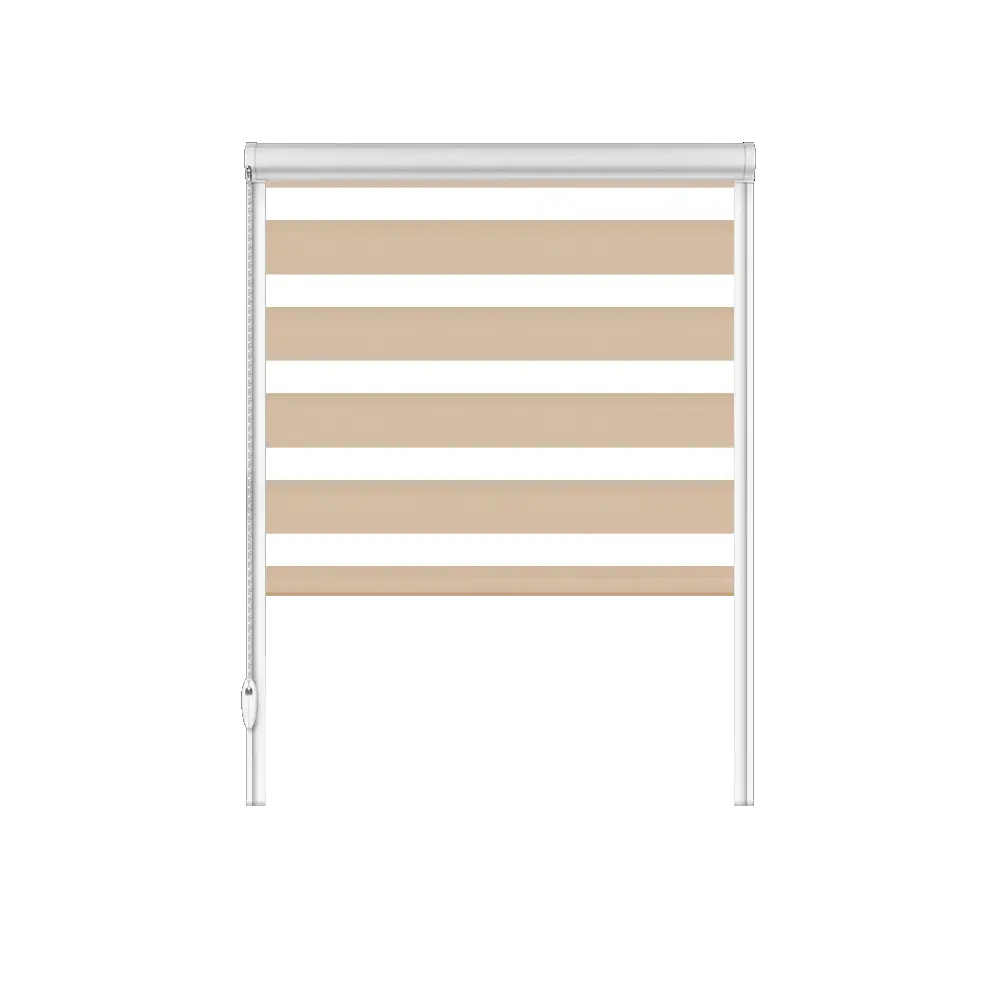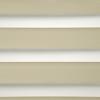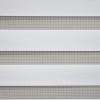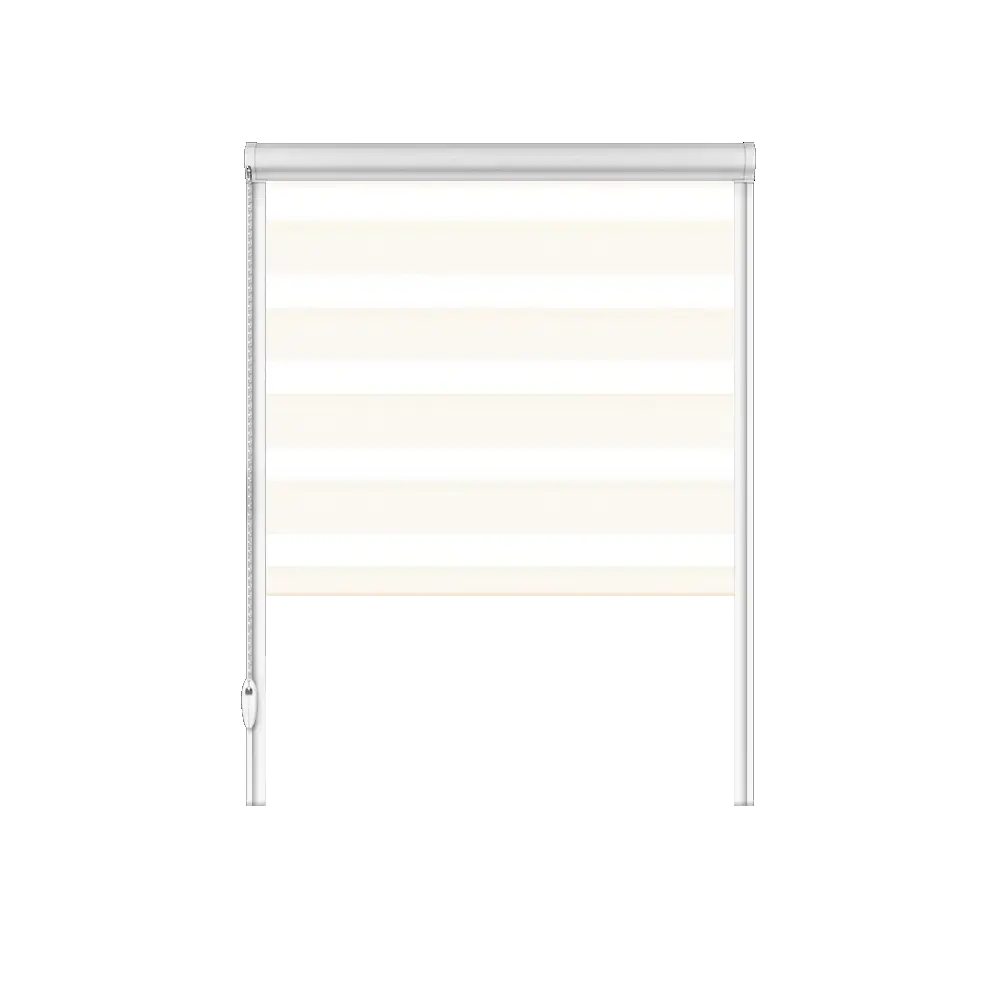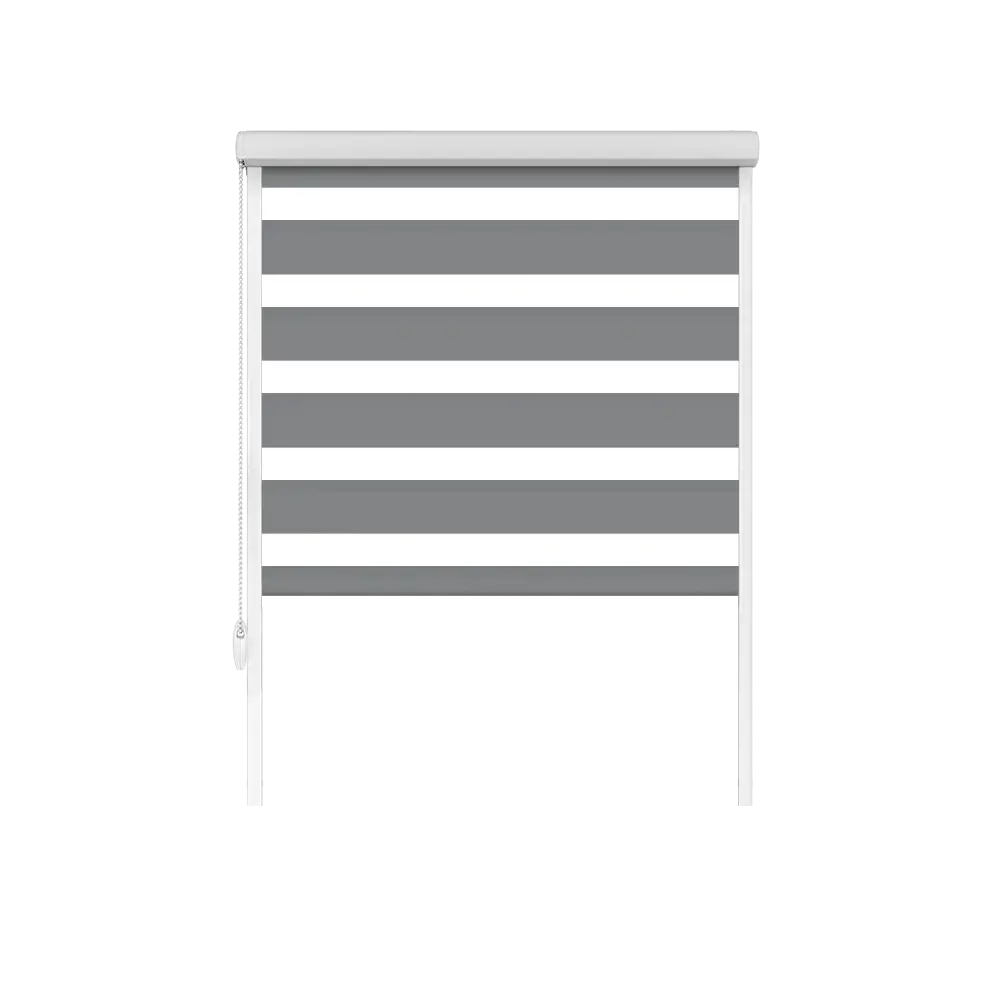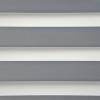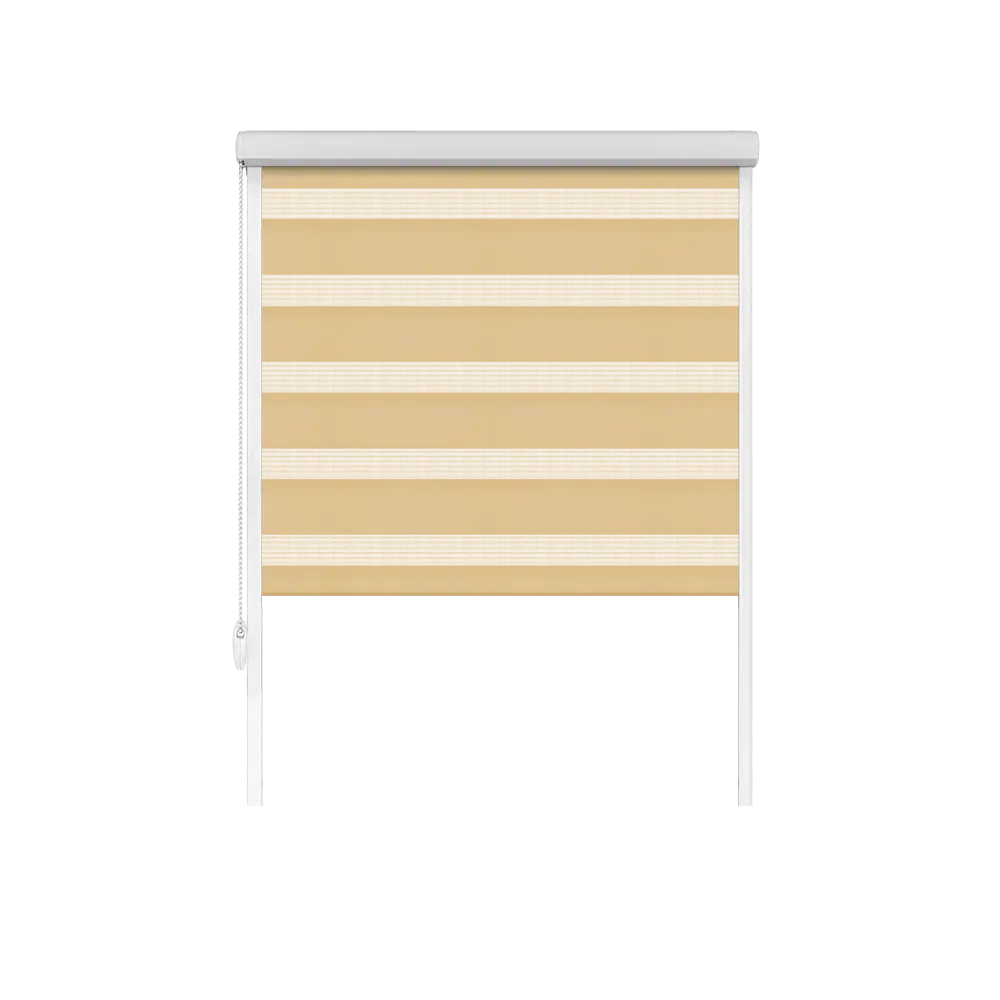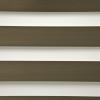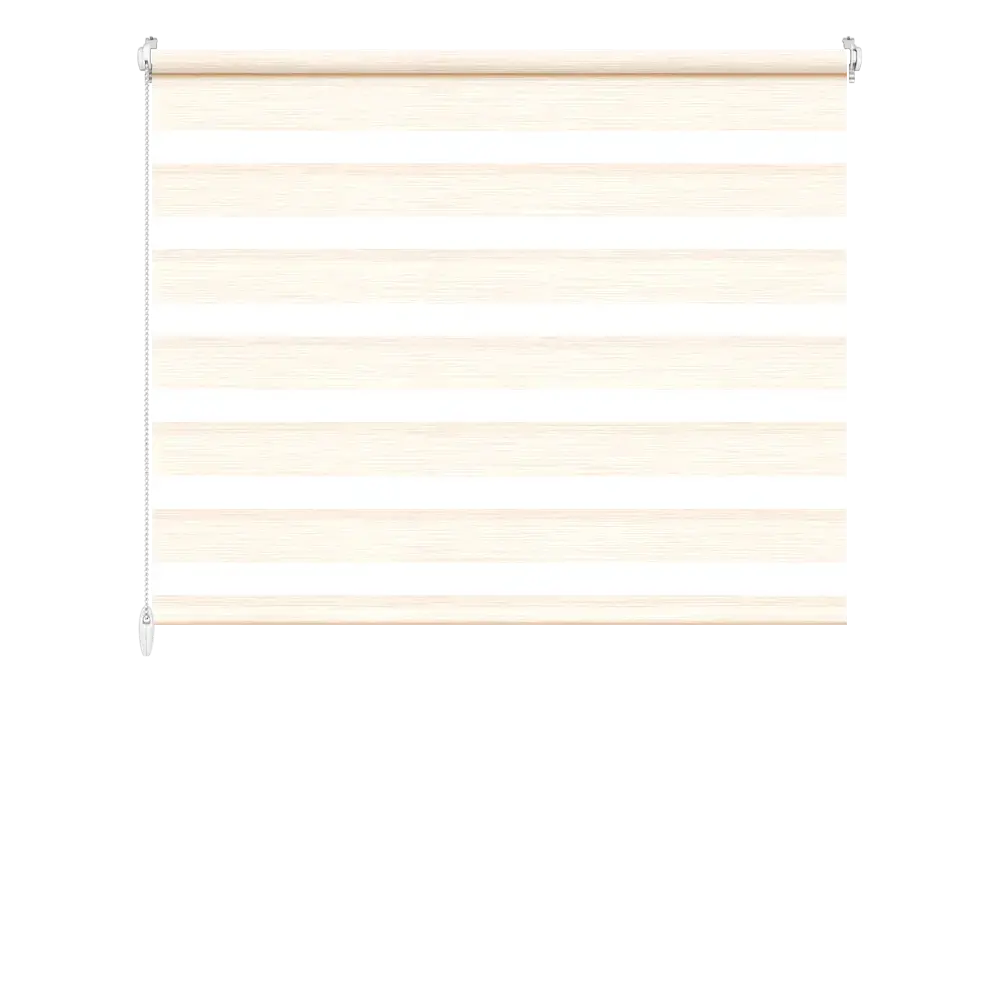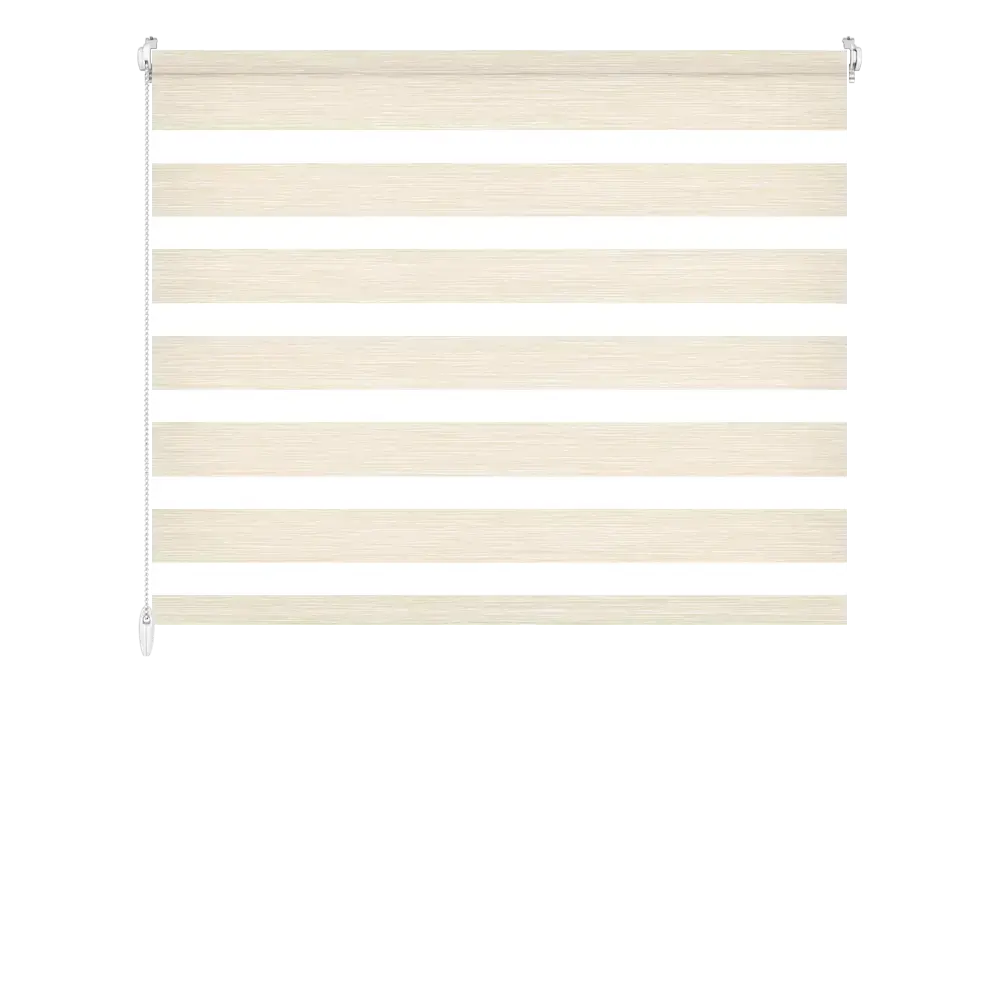What are you looking for?

How to put up day-night blinds?
Day-night blinds are a popular window covering solution. They are not only functional, but also decorative. They effectively help to adjust the lighting in the room to suit the needs of the household. If you are wondering how to put day-night blinds on a window, you have come to the right place. In this article, we will explain everything to you, one step at a time.
Characteristics of day-night blinds
The day-night blinds are made up of two types of fabric (a transparent fabric and a light-impermeable fabric), arranged alternately in horizontal strips. They have a specific adjustment system that allows the strips to be overlapped, so that you can adjust the level of shading to suit your needs. It can therefore be said that day blinds offer optimal control over the sunlight entering the interior - much more so than traditional window shades. Find out more: How do day-night blinds work?
When choosing day-night blinds, also pay attention to the colour and type of material used. Currently, grey, beige and white are the most popular shades. The structure of the material (smooth or structured with a perceptible texture) is also important.
Is this all about regulating day/night blinds? Not at all. They are distinguished by their modern installation system and can be easily controlled. There are models which can be fixed without an invasion, while for others, interference with the structure of the window frame or wall is necessary.
How do I install day-night blinds? How do I fit my day-night blinds?
There are two basic ways of installing roller blinds. The choice of the method depends on whether you are dealing with a wall (free-hanging) or window (with a line, in a cassette) roller blind.
Mounting hooks are the basis for the installation of the first option, while the second option uses mounting dowels and screws. The two variants also differ in the presence of side tension (window roller blinds have this element, while wall roller blinds do not). The set of the window option includes: roller blind with a specific mechanism, chain tensioner, mounting hooks, side tension of the fabric. A wall blind kit consists of: roller blind with mechanism, mounting pins and screws, chain tensioner. Do not forget the assembly instructions, present in each case.
To find out more, learn about the most common mistakes in roller blind installation.
How do I put on day/night blinds with line? How do I put in a day blind with line?
The installation of a window day-night blind (with a line) is completely non-invasive - no tools, drills, nails or screws are needed. It is hung on the window frame with the help of hooks, fixing clips and mounting tape. The fixing clips should hang on the window sash, connected to the top slat. Then comes the question: how do I attach the line to the day-night blind? The answer is trivially simple. Run the line, included in the kit, through the holes. Place a piece of tape on the back of the mounting clips - this will hold the window blind firmly in place.
Remember to centre the blind properly. Once you have established the position, glue it to the window sash. Run the strands hanging loosely through the holes in the lower tension bar and tension on both sides using a knob, screw, clip. Attach the clips or hooks to the bottom of the wing frame. Only when the lines are properly tensioned and knotted can you cut off the excess with scissors.
How do I install day-night blinds in a cassette?
A day-night window blind in a cassette is usually mounted non-invasively, although it can also be invasively mounted. Regardless of the type of installation, the initial stages are identical. First, remove the side guards on both sides of the cassette. Using mounting tape, fix the roller blind to the window (centring it beforehand) and press the cassette against the window sash. That's it for the non-invasive installation - the answer to the question "how to install day-night blinds in a cassette".
Invasively fitting a cassette day-night roller blind requires one more step - insert the screws, included in the kit, into the holes in the roller blind casing and then screw it and the cassette to the window (use a screwdriver or electric screwdriver). Next, attach the side guides. On both sides of the glass, to the glazing bars, glue the plastic guides with double-sided tape on the underside (if they are too long, shorten with scissors).
Examples of such roller blinds (in a cassette) are: PVC cassette day-night roller blind - Florida 112, PVC cassette day-night roller blind - Genua 33 and ALU cassette day-night roller blind - Astra 08.
What does it look like to fit a day-night blind? Wall blind variant
Wall (free-hanging) blinds are fixed to the wall or ceiling, not to the window frame. Appropriate tools are required. At first, you have to try the roller blind on the wall or ceiling, moving it to all sides. You will be interfering with the structure of the wall, so it is better to find the ideal position for the blind beforehand - you will then avoid additional, unnecessary drilling. The fabric should be centred. The lower weight bar must be a few mm above the floor or window sill (use a spirit level and pencil).
Next, holes need to be drilled into which the dowels or screws are placed. The next step is to attach the side chain to the whole mechanism, putting it through the tensioner and unrolling it. Next, the attachment of the entire structure (roller blind with mechanism, chain and tensioner) to the ceiling or wall takes place, using mounting dowels and screws.
Examples of free-hanging day-night roller blinds are: Free-hanging day-night roller blind - Astra 21 Blackout and Free-hanging day-night roller blind - Florida 27.
These are the general rules for the installation of free-hanging roller blinds. In the meantime, find out the details on how to operate the roller blind and how to replace the material in the blind. If you have the window covering manufacturer's instructions, follow the instructions.
help?
to call us
write to us


